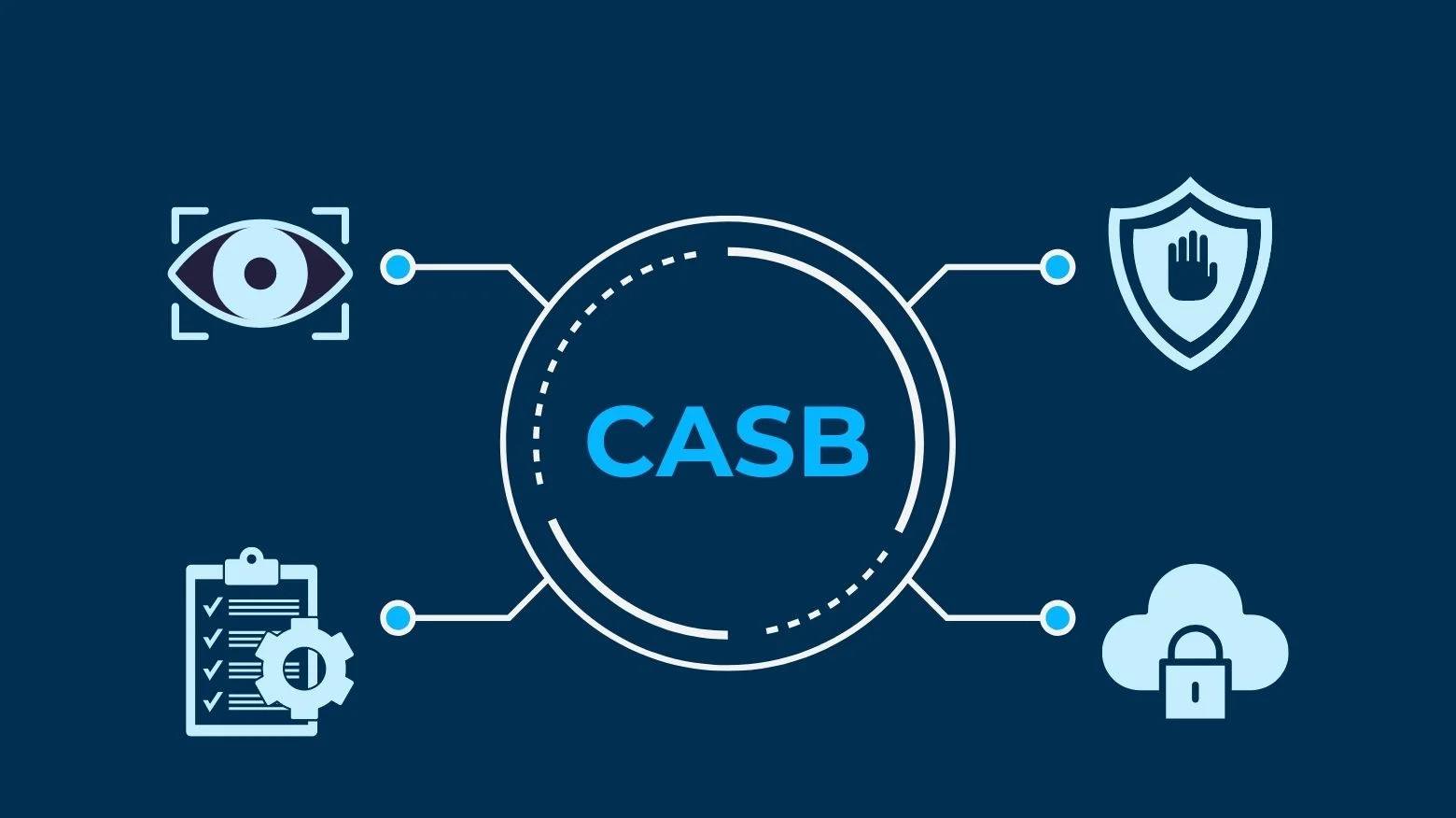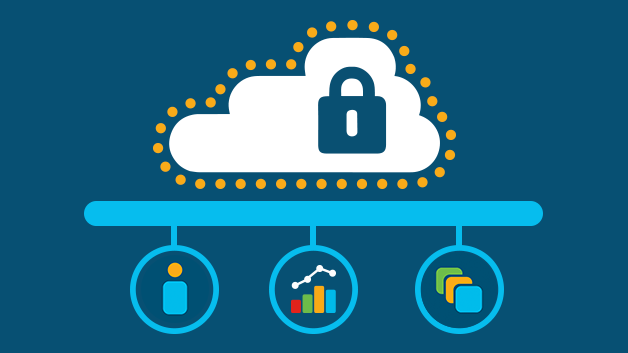What is a Cloud Access Security Broker (CASB)?
While your remote team has figured out how to make cloud-based applications boost their efficiency and productivity, they may be unintentionally creating security risks for your business. Day-to-day operations like allowing a third-party vendor to access protected data, or uploading files to a cloud solution may seem harmless, but actually puts your organization at risk. Utilizing a cloud access security broker (CASB) is a common way to gain visibility into your data movements to protect your business. In this article, we’ll explore what a CASB is, what it does, how it can benefit organizations, and its limitations as a standalone solution.
What is a Cloud Access Security Broker (CASB)?
A cloud access security broker, or CASB, is a company that helps protect other companies’ cloud-hosted services. CASBs help keep corporate software-as-a-service (SaaS) applications, along with infrastructure-as-a-service (IaaS) and platform-as-a-service (PaaS) services, safe from cyber-attacks and data leaks. Typically, CASBs offer their services as cloud-hosted software, although some CASBs also offer on-premise software or on-premise hardware appliances.
A number of different security technologies fall under the CASB umbrella, and a CASB will typically offer these technologies together in one bundled package. These technologies include shadow IT discovery, access control, and data loss prevention (DLP), among several others.
Think of a CASB as being like a physical security firm that offers a number of services (surveillance, foot patrol, identity verification, etc.) to keep a facility safe, rather than a single security guard. Similarly, CASBs offer a variety of services rather than one, simplifying the process of cloud data protection.

How does CASB work?
CASB implements access control, visibility, threat prevention, and data protection for a SaaS service that is used by an organization. By sitting at the edge of the cloud and inspecting all traffic entering and leaving it, CASB can block traffic that violates corporate policy or is determined to pose a potential risk to an organization and its cloud infrastructure.
A Cloud Access Security Broker solution can be deployed either as a physical security appliance or a SaaS solution. Corporate cloud infrastructure can be configured so that the CASB solution is in line with traffic flows entering and all traffic to and from corporate cloud solutions passes through it. Alternatively, CASB can integrate via APIs to gain the visibility and control that it requires.
Both deployment options enable a CASB solution to filter traffic based on its internal rules. These rules could include zero-trust access controls, corporate security policies, and limited threat prevention and filtering.
The four pillars of Cloud Access Security Broker
An effective CASB solution is constructed with four core features in mind:
Visibility
Remote work and BYOD are creating a greater need for organizations to know what’s happening in their cloud environments. Unmanaged devices abound, and without proper visibility into your deployments, you run the risk of allowing unwanted access. A CASB discovers your organization’s cloud app usage, creates reports on cloud spend, and performs risk assessments to let you decide whether an app should be blocked.
Compliance
Cloud computing services require that an inordinate amount of compliance regulations be met in order to operate at an organizational level. This is particularly true in the public sector as well as the financial services and healthcare industries. With a CASB, you can identify the greatest risk factors in your industry and set stringent data protection policies to achieve and maintain compliance across your organization.
Data Security
Every two years, the volume of the world’s data doubles in size. This exponential increase in data has seen bad actors become craftier than ever before. Combining a CASB with cloud DLP lets you not only see potential data risks but stop them, too. What’s more, you have visibility into sensitive content traveling to or from the cloud or between clouds, giving you the best chance to identify incidents, apply appropriate policies, and, above all, keep data secure.
Threat Protection
Cloud threats and malware are rampant in today’s IT ecosystem, and in most cases, cloud resources are the most vulnerable. A Cloud Access Security Broker gives you the power of behavior analytics and threat intelligence to turbocharge your cloud security. With these advanced capabilities, you can quickly identify and remediate suspicious activity, keep cloud applications and data secure, and bolster your organization’s overall cloud security posture.
Why do organizations use CASBs?
In cloud computing, data is stored remotely and accessed over the Internet. As a result, companies using the cloud have limited control over where data is stored and how users access it. Users can access cloud data and applications on any Internet-connected device and from any network, not just the internal company-managed network. For instance, a user could log in to a company-managed SaaS app from an unsecured network on their personal device, which typically would not be possible for applications that run on on-premise computers and servers (unless a remote desktop is used).
Using the cloud also makes it harder to ensure that data stays private and secure, just as it is harder to prevent strangers from eavesdropping when conversing in a public place instead of in a private room.
To fully protect data in the cloud, organizations typically use security services that are cloud-based as well. Sometimes, they obtain these services from different vendors: using one platform for DLP, one for identity, one for anti-malware, and so on. But this approach to cloud security also creates challenges: several contracts have to be negotiated separately, security policies have to be configured numerous times, implementing and managing multiple platforms creates complexity for IT, etc.
CASBs are one solution to these challenges. Purchasing these security measures from one cloud security broker instead of several different vendors means:
- All the technologies involved work well together.
- Simplified management of cloud security tools; IT teams can work with one vendor, instead of a half-dozen vendors. Additionally, many CASBs enable their customers to manage all cloud security services from a single dashboard.

The Benefits of a Cloud Access Security Broker
Implementing a CASB gives your organization’s security team an empowering view of the flow of data through all cloud-based applications.
Discover shadow IT
Employees can unintentionally access or move data without IT approval in the course of their workday, using unsanctioned devices or software. For example, a salesperson adopts Calendly or a member of the accounting team uploads financial data to a personal cloud drive. A CASB reveals such sanctioned activity, enabling you to stop shadowing IT and train employees on cloud usage best practices.
Prevent data loss
A CASB notifies your security team about abnormalities in data movement through the cloud-based system. Your security team can use this information to enforce your organization’s policies around unauthorized sharing, corrupting, or deleting of sensitive data. A CASB also encrypts and fingerprints files moving onto or off of the cloud, lowering the risk of data loss.
Detect threats
A CASB detects unusual or high-risk behavior across cloud-based applications, whether they are internal threats, malicious or negligent, or external cyberattacks. Being apprised of these risks early often limits your company’s exposure to insider threats.
What Are Some Challenges With CASB?
The main limitation of a Cloud Access Security Broker solution is integrating it with the rest of your organization’s standalone security solutions. Each additional cybersecurity solution increases the complexity (and subsequently the cost) of managing security since every security solution must be acquired, provisioned, monitored, and maintained separately.
CASB’s biggest challenge to implementation also highlights why the software is so necessary for enterprises that have already invested heavily in on-premises security solutions: these organizations need a technology that can consolidate their standalone security measures into a streamlined, cloud-optimized solution.
Conclusion
CASBs have proven to be invaluable for businesses looking to enhance remote access for their workers. CASBs are one way you can ensure a workable solution for your cloud data access and security. Throughout this article, you’ve learned about CASBs, why we use them, their benefits, and their limitations.